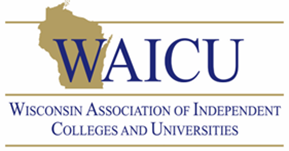MADISON, Wis.—Proposals to reduce federal financial aid funding would severely limit educational opportunities for Wisconsin students, according to state higher education leaders.
Universities of Wisconsin President Jay Rothman, Wisconsin Technical College System President Layla Merrifield, and Wisconsin Association of Independent Colleges and Universities President and CEO Eric W. Fulcomer said at a news conference today that proposed cuts and programmatic changes to federal aid programs put education attainment at risk. For example, more than 70,000 low-and moderate-income students seeking higher education in Wisconsin receive a Pell Grant.
The leaders issued the following statements:
 WTCS President Layla Merrifield:
WTCS President Layla Merrifield:
“With more than 287,000 students across the Wisconsin Technical College System (WTCS), our colleges are a vital resource for affordable, accessible and student-centered education. Employers across our 16 college districts rely on us to develop the skilled talent they need to remain competitive in today’s continually evolving economy. Our colleges serve all types of learners, including a large share of students that are economically disadvantaged, and without broad access to financial aid, many of our students – nearly 80% of whom attend part-time – would face significant barriers to pursuing their education. About 29,400 Pell Grant recipients would be adversely affected by these changes, and potentially thousands would receive no financial assistance at all. Some provisions in the Student Success and Taxpayer Savings Plan threaten to undermine that access, and the consequences for our students could be devastating.”
 WAICU President and CEO Eric W. Fulcomer:
WAICU President and CEO Eric W. Fulcomer:
“Wisconsin currently faces a critical shortage of approximately 12,500 college-educated workers each year to fill jobs. Now is the time to increase college access to low-income students through the various federal financial aid programs, such as the Pell Grant. In the most recent reporting year, more than 10,600 Wisconsin Private College students received Pell Grants, making up 29 percent of our undergraduate student population. Many of these students stay in Wisconsin after graduation, filling high-demand jobs at Wisconsin’s largest companies, fueling our state’s economy, and serving as the driving force for Wisconsin’s workforce readiness and vitality. Taken together, the proposals contained in the House’s budget reconciliation bill would have a devastating impact on students and the institutions that serve them. The bill would significantly restrict student opportunities, increase costs for students, and reduce the ability of colleges and universities to fulfill their educational missions. At a time of critical need for more doctors, nurses, engineers, and teachers, especially in rural and other underserved areas, creating barriers to completion runs counter to bipartisan workforce development goals.”
U niversities of Wisconsin President Jay Rothman:
niversities of Wisconsin President Jay Rothman:
“It makes no sense for the U.S. to narrow opportunities if our country wants to win the global War for Talent. I’m dumbfounded that cutting educational opportunities would even be considered when our economic vibrancy is at stake. Our 13 public universities together have nearly 31,600 Pell Grant recipients who are depending on financial aid to get the educational opportunities that will be life changing. Dating back to the GI Bill that helped our WWII veterans, federal financial aid has long helped millions obtain a degree to the betterment of themselves, our communities, and our economy. We hope the U.S. Congress will ensure we can continue to provide these kinds of valuable educational opportunities to future students.”
About the Universities of Wisconsin
The Universities of Wisconsin serve approximately 164,400 students. Awarding nearly 36,000 degrees annually, these 13 public universities are Wisconsin’s talent pipeline, putting graduates in position to increase their earning power, contribute to their communities, and make Wisconsin a better place to live. Nearly 90 percent of in-state Universities of Wisconsin graduates stay in the state five years after earning a degree. The universities provide a 23:1 return on state investment. The Universities of Wisconsin also contribute to the richness of Wisconsin’s culture and economy with groundbreaking research, new companies and patents, and boundless creative intellectual energy. Learn more at wisconsin.edu.
About the Wisconsin Technical College System
The Wisconsin Technical College System (WTCS) offers more than 500 programs awarding two-year associate degrees, one- and two-year technical diplomas, short-term technical diplomas, certificates and related education for apprenticeships. The System is the major provider of customized instruction and technical assistance for Wisconsin employers. With more than 287,000 people enrolling in a technical college each year, it is the largest higher education system in the state. Visit www.WTCSystem.edu to learn more.
About the Wisconsin Association of Independent Colleges and Universities
The Wisconsin Association of Independent Colleges and Universities (WAICU) is the official organization of the 22 independent (or private) institutions of higher learning in Wisconsin. Membership is limited to accredited, nonprofit institutions, headquartered in Wisconsin. WAICU members collectively enroll more than 52,000 undergraduate and graduate students each year, graduating 12,800 students annually. WAICU members offer more than 400 academic majors and minors and produce 23 percent of all the bachelor’s degrees and 33 percent of all the advanced degrees awarded in the state. WAICU’s mission is: “Working together for educational opportunity.” Visit wisconsinsprivatecolleges.org to learn more.
MEDIA CONTACT:
WISCONSIN TECHNICAL COLLEGE SYSTEM
Katy Pettersen, katy.pettersen@wtcsystem.edu
WISCONSIN ASSOCIATION OF INDEPENDENT COLLEGES AND UNIVERSITIES
Pamela Seelman, pamela.seelman@waicu.org
UNIVERSITIES OF WISCONSIN
Mark Pitsch, mark.pitsch@wisconsin.edu
